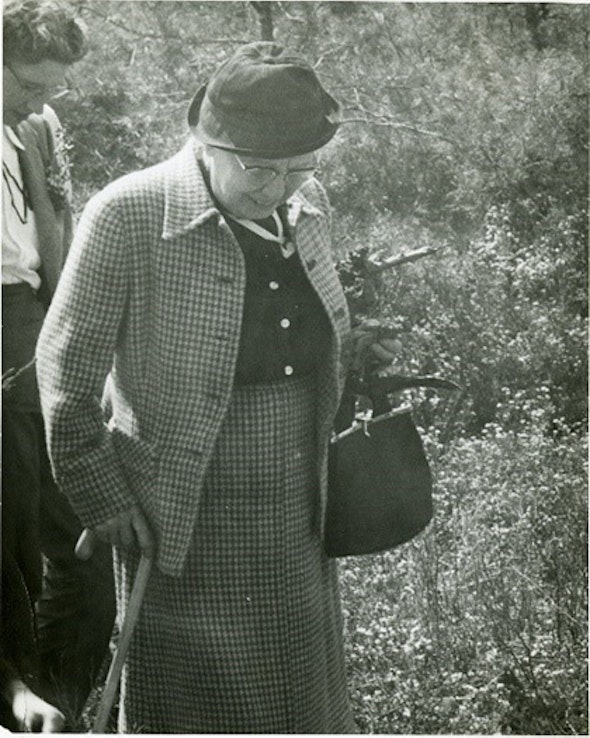About the Arboretum
The Barnes Arboretum at Saint Joseph’s University, a 12-acre arboretum astonishingly diverse for its size, is home to more than 2,500 taxa of woody and herbaceous plants, many rare. The peony, lilac, and fern collections, which date from the early 1900s, are important genetic resources for conservation and study, and an herbarium contains more than 10,000 specimens that supplement teaching and research. The Arboretum is located at 50 Lapsley Lane, Merion, PA 19066. Plan a visit on Saint Joseph's website.
In 1922, when Dr. Albert C. Barnes and his wife, Laura Leggett Barnes, purchased the property, it already housed a collection of specimen trees that its previous owner, Captain Joseph Lapsley Wilson, had started assembling in the 1880s. While Dr. Barnes concentrated on his art collection, Laura Barnes devoted herself to the arboretum. Her legacy lives on in the beauty of the landscape and in the horticulture school that she founded in 1940.
Partnership with Saint Joseph’s University
In 2018, the Barnes and Saint Joseph's University launched an educational partnership expanding opportunities for students and the local community. Classes and workshops, and the long-running Barnes Horticulture Certificate Program continue, and Saint Joseph’s University is exploring a new horticulture minor as well as academic credit for select horticulture courses. The Barnes retains oversight of the arboretum and the historic buildings, while the operations and grounds are now managed by Saint Joseph’s University.
Highlights of the Arboretum

Laura L. Barnes Fern Dell
Mrs. Barnes, who served as the arboretum’s director for nearly 40 years, was keenly interested in hardy ornamental ferns. In the late 1920s and ’30s, she planted almost 100 varieties of American and foreign ferns in the southeast corner of the arboretum. Many of these specimens survive to this day.
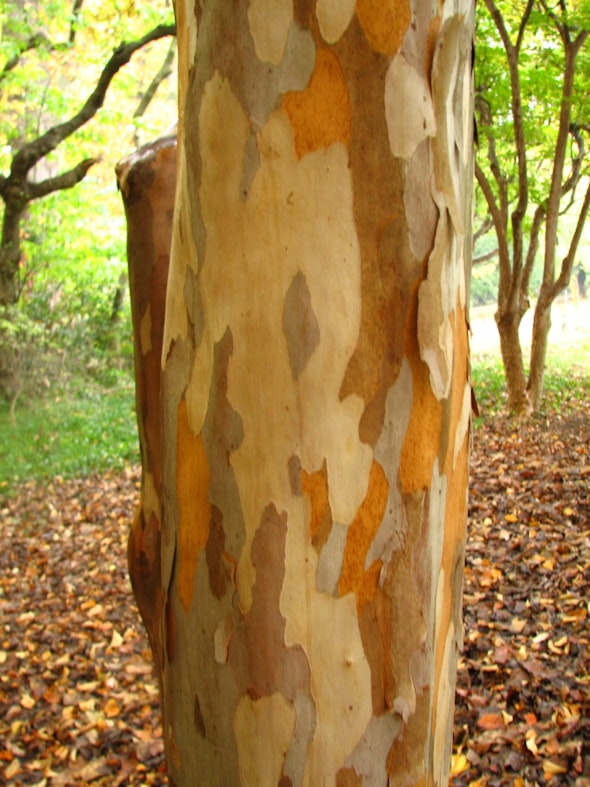
Rare Trees
The arboretum’s original owner, Joseph Lapsley Wilson, planted more than 200 species of trees between the 1880s and 1922, when Albert and Laura Barnes purchased the land. Several of the rarer varieties, including many from Asia, were acquired after the 1876 World’s Fair in Philadelphia. Under the directorship of Mrs. Barnes, the arboretum gained other rare trees and plants. The unusual appearance of the monkey-puzzle tree (Araucaria araucana), native to the Andes, has made it a visitor favorite. The arboretum’s redwood (Sequoia sempervirens), typically found amid the coastal forests of Northern California, is a rare sight in these parts.

Magnolia Collection
There are more than a dozen varieties of magnolias in the arboretum, and they put on an impressive show each spring and early summer. With cascading flowers in various shades of pink, they make a perfect backdrop to the arboretum’s main entrance. The flowering plants of the Magnolioideae family have a long history, dating from the days before bees, but seeing them in bloom never gets old.
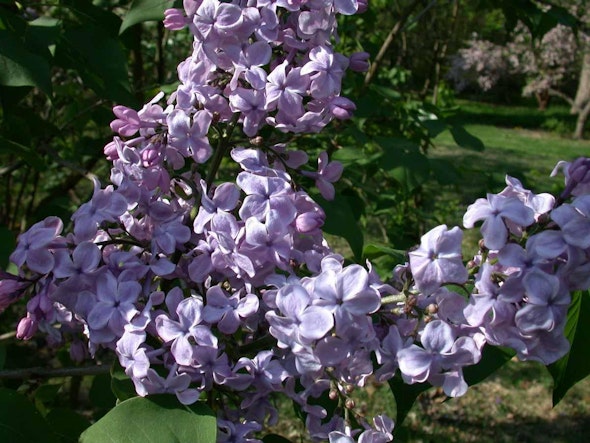
Lilac Collection
When asked to describe the smell of lilacs (Syringa), many people simply say they smell like spring. Which means that in May, when many of the varieties at the arboretum come into bloom, the whole garden is awash in the scent of spring.
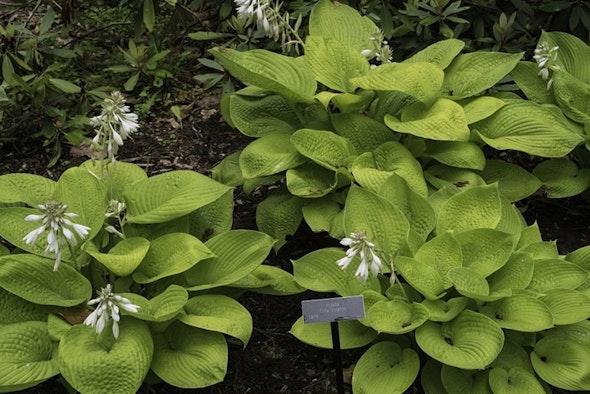
National Hosta Display Garden
Our hosta collection, established in 2012, is the largest in the region. In 2015, it was designated a National Display Garden by the American Hosta Society. Hostas, also known as plantain lilies, are shade-tolerant herbaceous perennials, cultivated primarily for their beautiful foliage. Native to Asia, hostas were first introduced to Europe in the late 1700s and to the US in the mid-1800s.
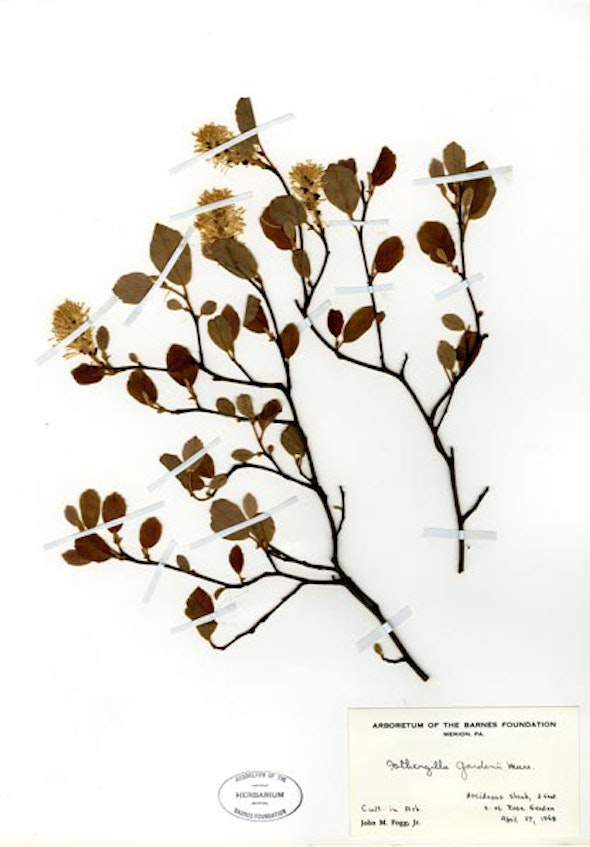
Herbarium
The herbarium is the hidden gem of the arboretum. With more than 10,000 preserved plant specimens, it is a vital resource for understanding a plant’s taxonomy, growing conditions, and history. Open by appointment for research purposes only. The has been digitized and is available on JSTOR’s Global Plants platform (subscription required).

Peony Collection
The arboretum has several varieties of Paeonia, including one from a seed cultivated by Laura Barnes herself. Each late spring-blooming variety has its own distinct scent, and the flower types are as diverse as their perfumes. The peony collection shares a garden with the arboretum’s honey bees.
About Laura Barnes
If Albert Barnes expressed his passion through art appreciation, his wife, Laura, expressed hers through the cultivation of beautiful plants.
The daughter of a wealthy family from Brooklyn, Laura Leggett married Dr. Albert C. Barnes in 1901. Though the origin of her interest in horticulture is unknown, there is evidence that she managed the gardens at Lauraston, the couple’s first home in Merion, Pennsylvania.
Laura Barnes became director of the arboretum in 1928, and in 1940 founded the horticulture school, where she was also an instructor. Responsible for the acquisition of plants for the gardens, she corresponded and exchanged specimens with many other notable collections, including Harvard University’s Arnold Arboretum and the Brooklyn Botanic Garden.
She also maintained a personal library of horticulture books, which are now held in the Barnes Foundation’s special collections.
